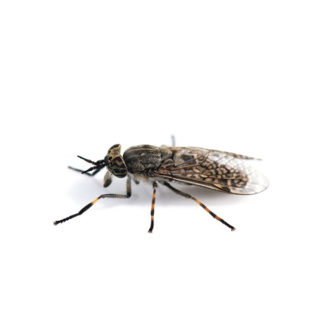Lovebugs in Kailua Kona
Lovebugs earned their name because they are frequently observed in pairs or “attached” during mating. Being closely related to gnats, mosquitoes, and sandflies, lovebugs are social insects that gather in substantial swarms. Their flights typically take place in late spring and summer, right after the females emerge. This period becomes a nuisance as lovebugs enter homes, create splatters on vehicle windshields and hoods, and land in the paths of joggers and cyclists.
Lovebug Habitat
In common with many insects, lovebugs find comfort in dark, damp, and humid habitats. When scouting for an appropriate spot to deposit eggs, female lovebugs prefer moist areas containing food like decaying grass, mulch, or compost beds. The likelihood of insects entering homes rises if structures are close to known lovebug infestation zones. Excessive moisture in indoor areas like basements or storage rooms may encourage the growth of vegetation that lovebugs feed on, attracting these pesky pests. Understanding the habitat preferences of lovebugs is crucial for implementing effective measures to minimize their presence and prevent potential infestations within homes.
Lovebug Behaviors, Threats, or Dangers
Although lovebugs do not bite humans or pets, they can inflict significant damage and unpleasant odors on homes and cars. The acidic body chemistry of lovebugs can have detrimental effects on vehicle paint, and their fatty tissue, when exposed to sunlight, can corrode a car’s finish. Perishing in large numbers on windshields, hoods, and radiator grates, they become extremely challenging to remove without causing harm to the painted surface after a few hours. The impact of lovebugs on homes and vehicles underscores the need for prompt and careful cleaning measures to mitigate potential damage caused by their acidic bodily fluids and fatty tissues. If you are dealing with a lovebug issue on your property, contact your local fly exterminators.
Need help with Lovebug control?
Need Pest Control Service?
Leave your information below and we’ll be in touch with a FREE quote!
"*" indicates required fields
*During normal business hours. After hours calls will be returned the next business day.





